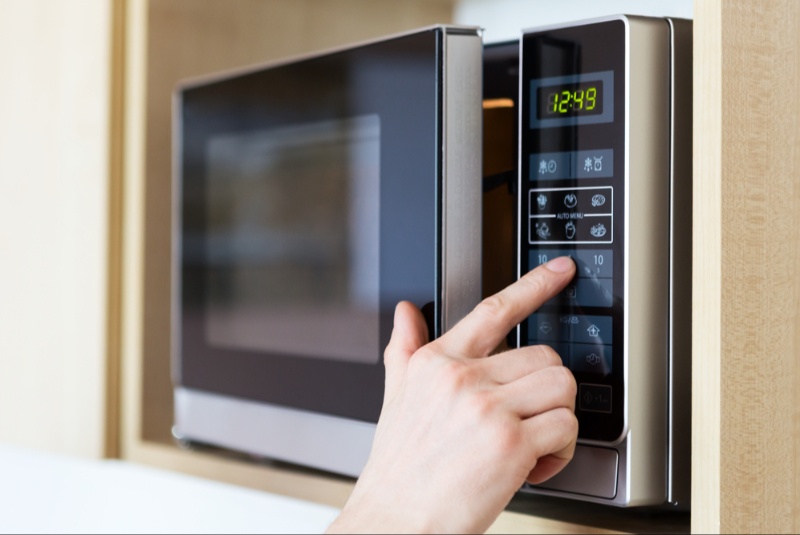In an era where wellness trends ebb and flow with the seasons, juicing remains a steadfast ally in the pursuit of health. A glass of fresh juice is more than a vibrant concoction of vitamins and minerals; it's a ritual for those dedicated to nurturing their well-being. However, embarking on this juicy journey begins with a critical decision: choosing the right juicer. With a plethora of models flooding the market, making a wise purchase requires more than a cursory glance at the price tag. This guide aims to empower you, the consumer, with practical tips to ensure your investment is fruitful in every sense.
Understand Your Juicing Needs
First, introspect on your juicing habits. Are you a morning celery-juice enthusiast or a connoisseur of mixed-fruit masterpieces? The frequency and complexity of your juicing recipes will determine the type of juicer that best suits your lifestyle.
Centrifugal Juicers are akin to the sprinters of the juicing world – fast and efficient, perfect for those needing a quick juice fix. They work by grinding fruits and vegetables against a fast-spinning metal blade, separating the juice from the pulp with centrifugal force.
Masticating Juicers, also known as slow juicers or cold-press juicers, are the marathon runners, operating at lower speeds to chew through produce and extract juice. These are typically better for leafy greens and wheatgrass and preserve more nutrients due to less heat and oxidation.
Triturating Juicers take it up a notch by using twin gears to crush and press produce, rendering high yields and nutrient-rich juice. These are top-tier machines for the serious juicer.
Manual Juicers are for those who prefer a more hands-on approach and typically work well for citrus fruits. They're simple, quiet, and easy to clean.
Assessing the Quality and Build
Once you've pinpointed the type of juicer, inspect the build quality. A sturdy juicer might cost more upfront but can withstand the rigors of daily use, translating to long-term savings. Check for:
- Durability of Materials: Stainless steel and other high-grade materials fare better than plastic.
- Motor Power: A robust motor extends the juicer's lifespan and can handle tougher produce.
- Warranty: A longer warranty period is often indicative of the manufacturer's confidence in the product.
Evaluating Ease of Use and Cleaning
A juicer's convenience is a cornerstone of its usability. If it's a hassle to assemble, operate, or clean, it'll likely gather dust. Look for:
- Simple Assembly: Fewer parts mean straightforward assembly and disassembly.
- Ease of Operation: Intuitive controls and features, like reverse functions or multiple speed settings, enhance the juicing experience.
- Cleaning Convenience: Some juicers come with dishwasher-safe components or self-cleaning functions, a boon for the busy user.
Juicing Efficiency and Yield
Efficiency isn't just about speed; it's about how much juice you get from your produce. Masticating and triturating juicers typically offer higher yields, especially with leafy greens. Look for:
- Dry Pulp: The drier the pulp, the more juice extracted, indicating efficiency.
- Adjustable Pulp Ejection: This feature allows you to control the amount of pulp in your juice and manage continuous juicing without stopping to clean out the pulp.
Considering Nutrient Retention
The core motive for juicing is nutrient consumption. Heat and oxidation can diminish the quality of juice, so consider juicers that operate at lower speeds and temperatures to preserve the integrity of enzymes and vitamins.

Noise Level
Your household’s tolerance for noise might also influence your decision. Generally, the faster the juicer, the louder it is. Masticating juicers tend to be quieter, a considerate feature for early risers or those with noise-sensitive family members.
Size and Counter Space
Space is a premium in modern kitchens. Some juicers are compact and easy to store, while others are bulky and require permanent countertop residence. Measure your space and consider how the juicer's size will harmonize with your kitchen landscape.
Extra Features and Versatility
Some juicers come with bells and whistles that extend their functionality beyond juicing, such as attachments for making nut butter, sorbet, or baby food. If you're looking for a multi-tasking appliance, these features may offer added value.
Price Point and Budget Considerations
Decide on a budget, but be mindful that the cheapest option may not always be the most cost-effective in the long run. Mid-range juicers often provide a balance between quality and affordability.
Brand Reputation and Reviews
Investigate the reputation of the brand. A company with a track record of quality and customer service offers peace of mind. Moreover, customer reviews can provide real-world insights into a juicer's performance and longevity.
Making the Purchase
With your research complete and your preferences in tow, you're ready to make a wise purchase. Here's a recap of the steps to take when you're ready to buy:
- Identify Your Juicing Preferences: Decide on the type of juicer that matches your lifestyle.
- Quality Over Cost: Opt for durable materials and a robust motor.
- Convenience Is Key: Look for ease of use and cleaning.
- Maximize Yield: Choose a juicer that extracts the most from your produce.
- Nutrient Preservation: Consider the health benefits of a slower, cooler juicing process.
- Volume Control: Contemplate the noise level.
- Size Matters: Find a juicer that fits your kitchen space.
- Added Features: Decide if extra functionalities are worth the investment.
- Budget Wisely: Stick to your budget but be open to spending a little more for quality.
- Reputation and Reviews: Lean on the experiences of others to inform your choice.
After the Purchase: Getting the Most Out of Your Juicer
Once the juicer has found its home on your countertop, it's time to reap the rewards. Start by juicing a variety of produce to understand the capabilities and limitations of your new appliance. Maintain it according to the manufacturer's instructions and clean it promptly after use to prolong its lifespan.
Embrace the habit of juicing wholeheartedly, but remember that it should complement a balanced diet. Fresh juice is a nutrient-dense addition to your daily intake, but it is not a complete substitute for whole fruits and vegetables.
Choosing a juicer is a significant step on the path to a healthier lifestyle. It's a personal appliance that can transform your diet and amplify your nutrition. By taking the time to make a wise purchase, you invest in your health, your happiness, and the quality of your daily life. Your perfect juicer—one that fits your habits, kitchen, and budget—is out there. Use these tips to squeeze every bit of value from your purchase, and let the revitalizing journey begin.




